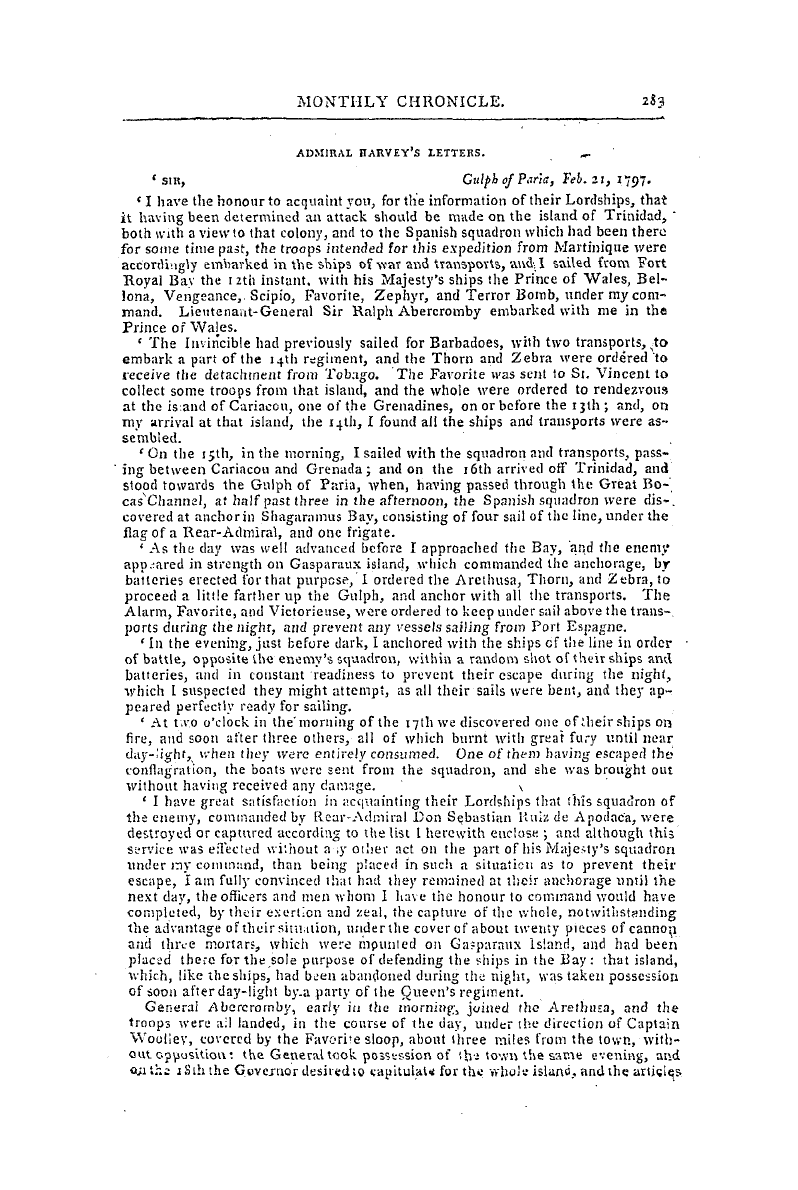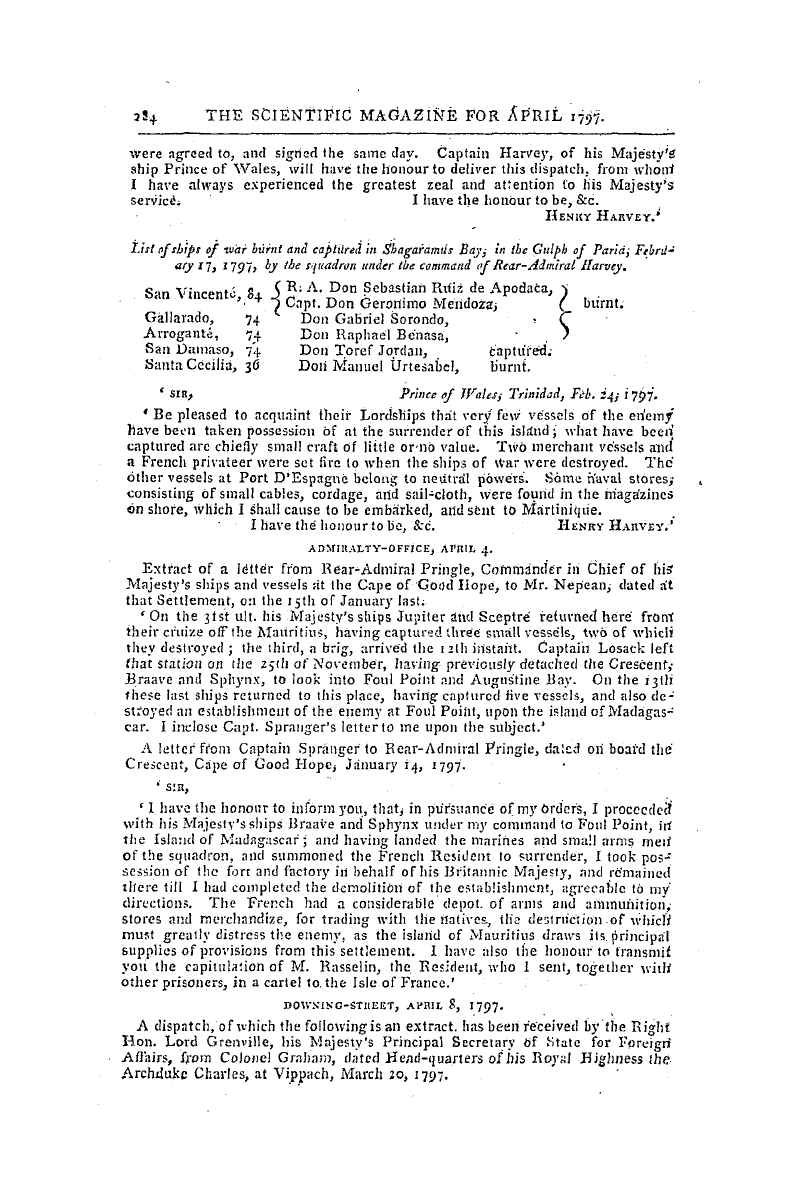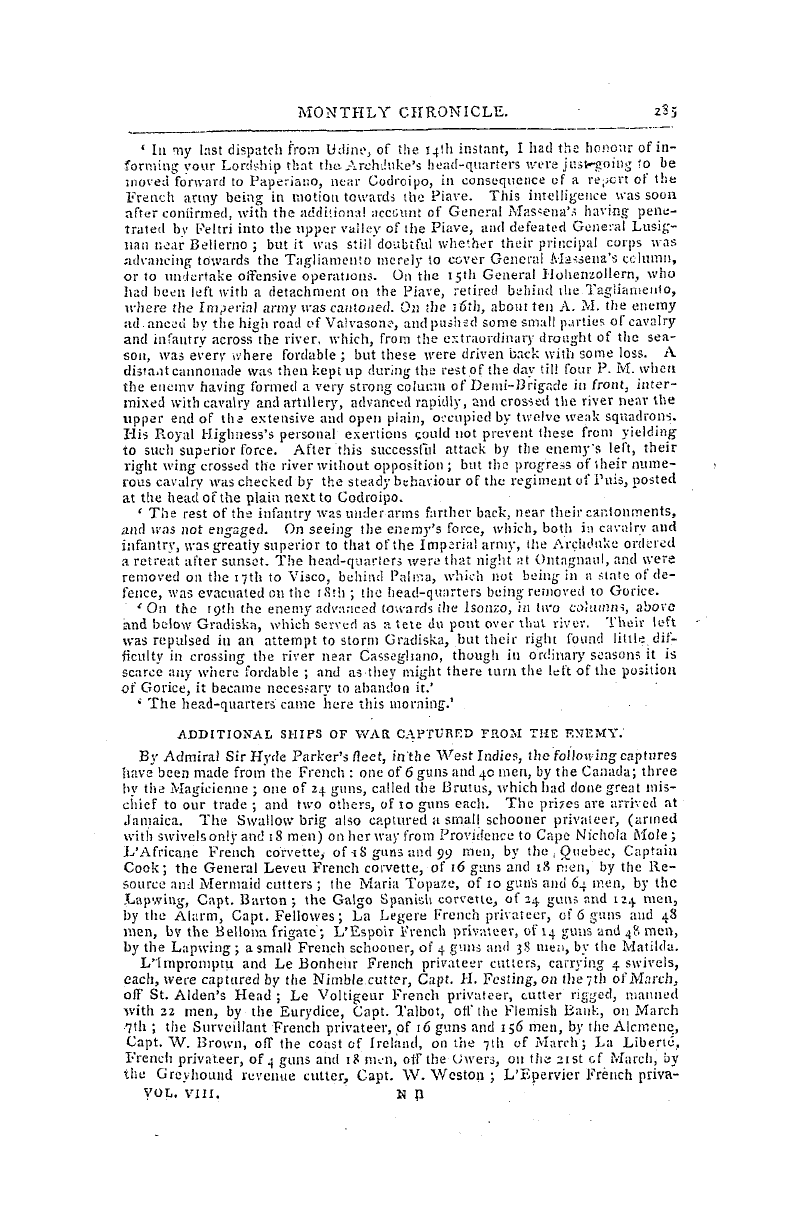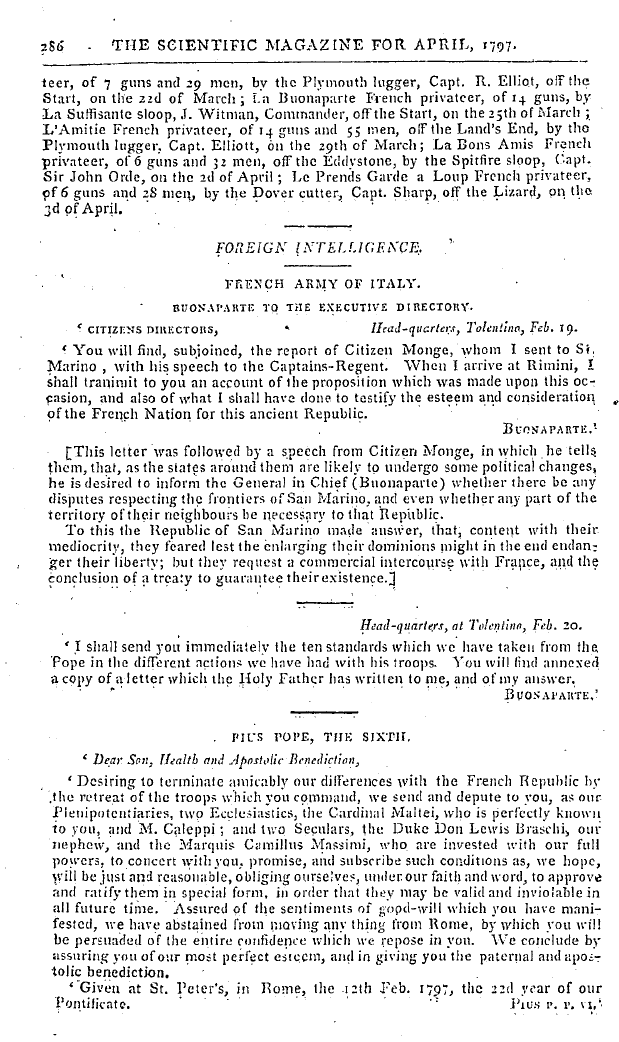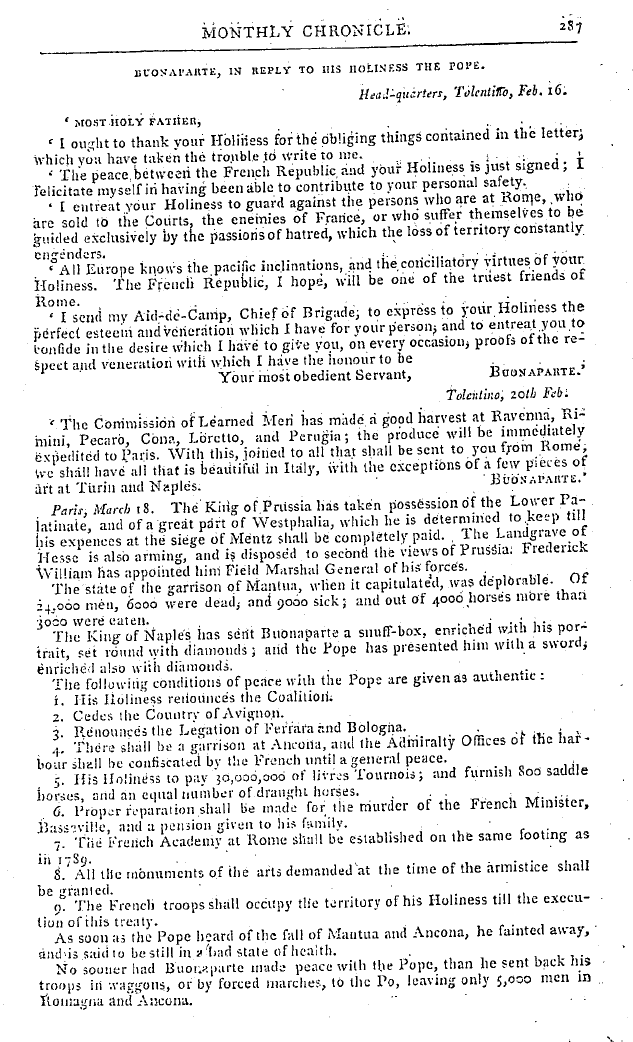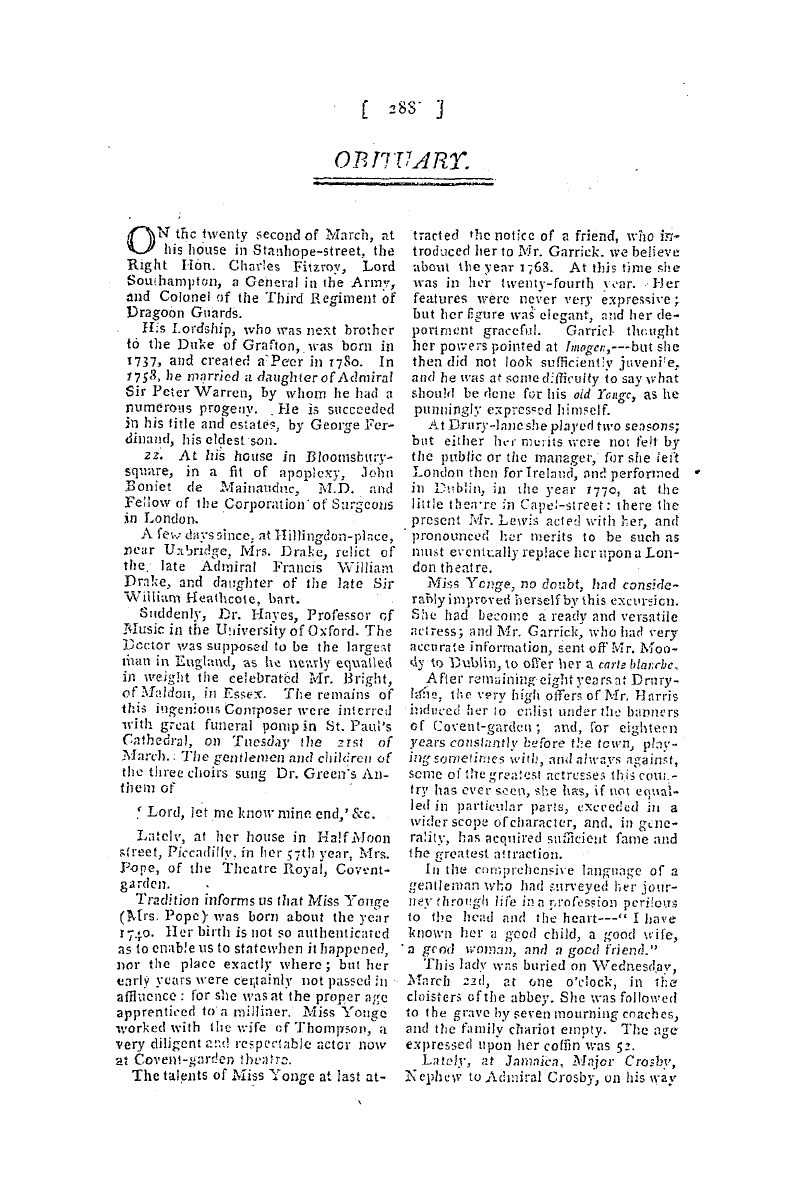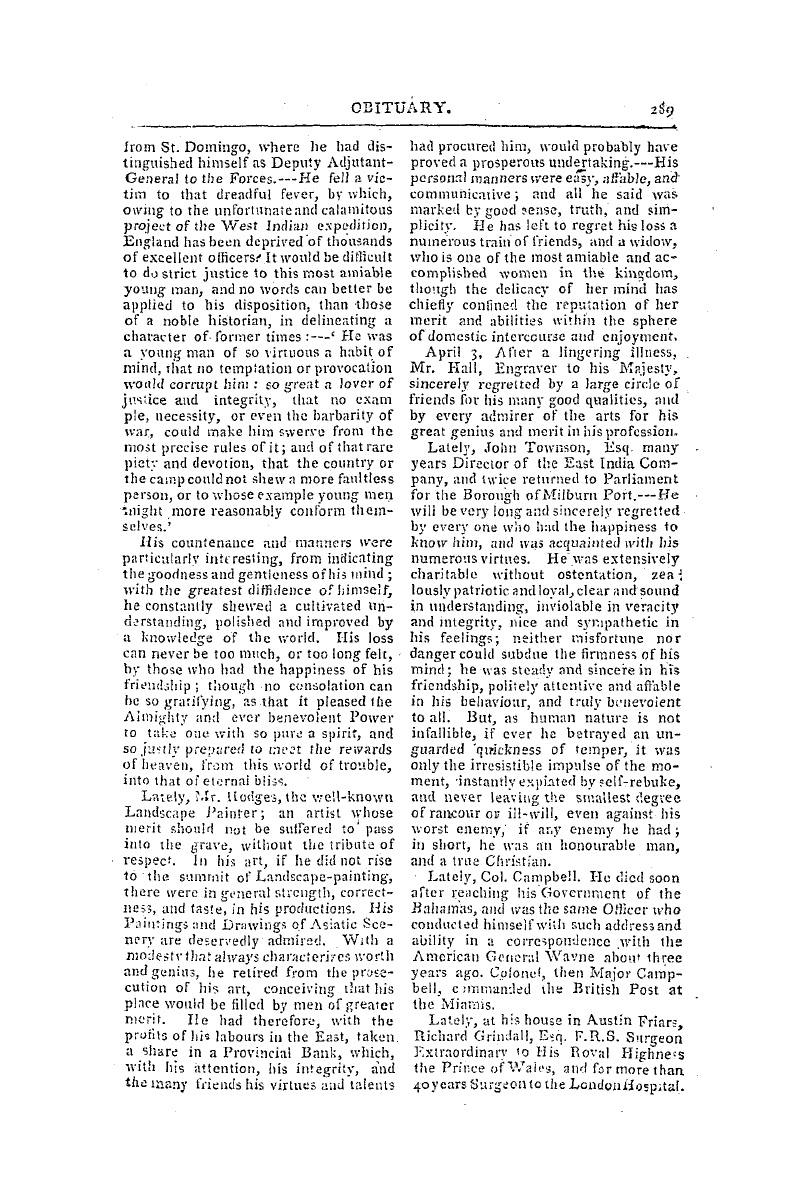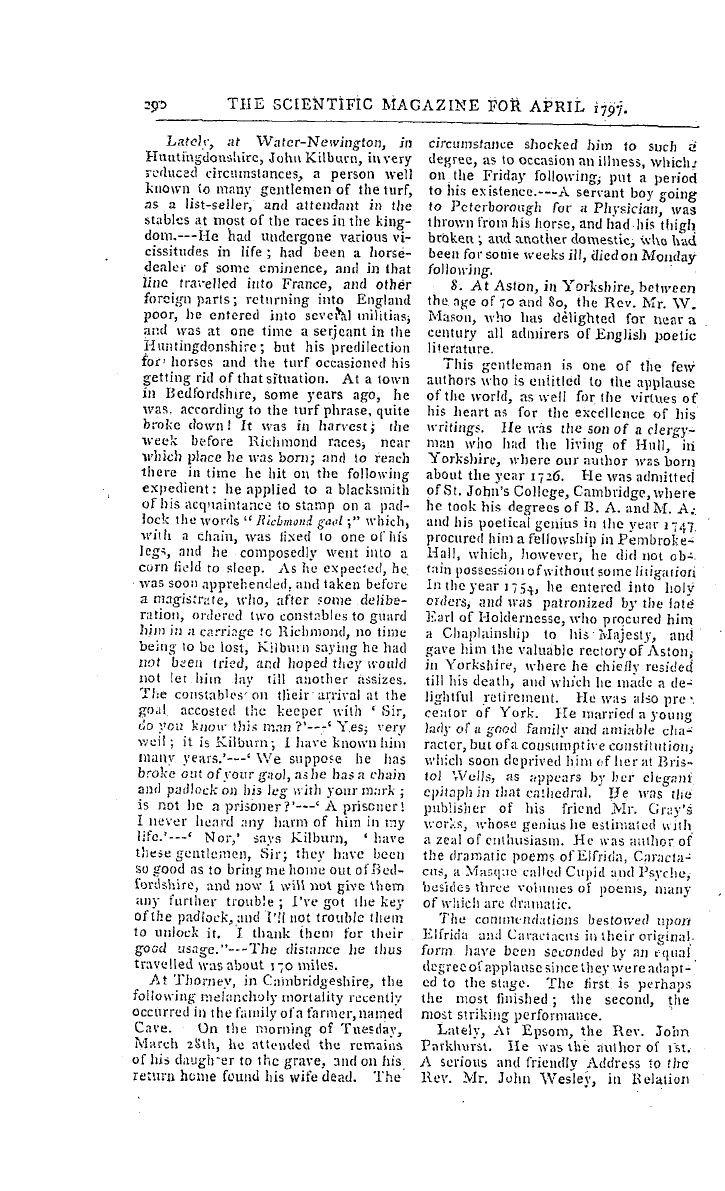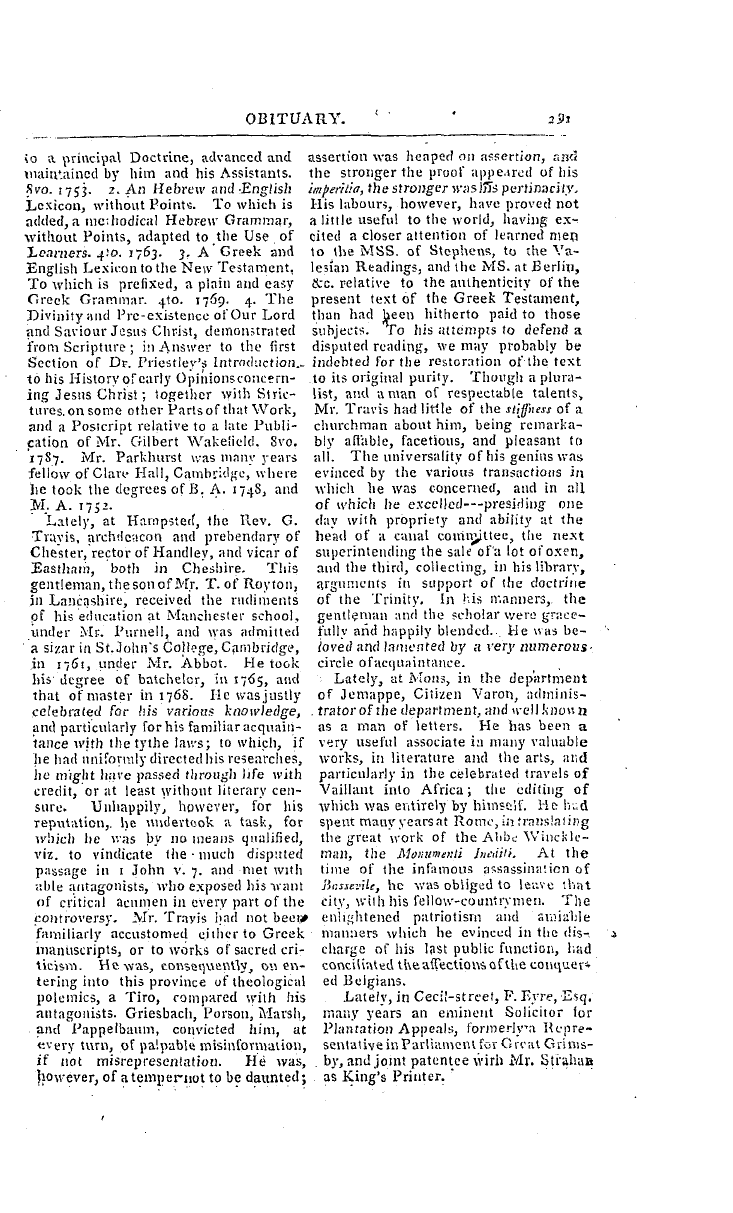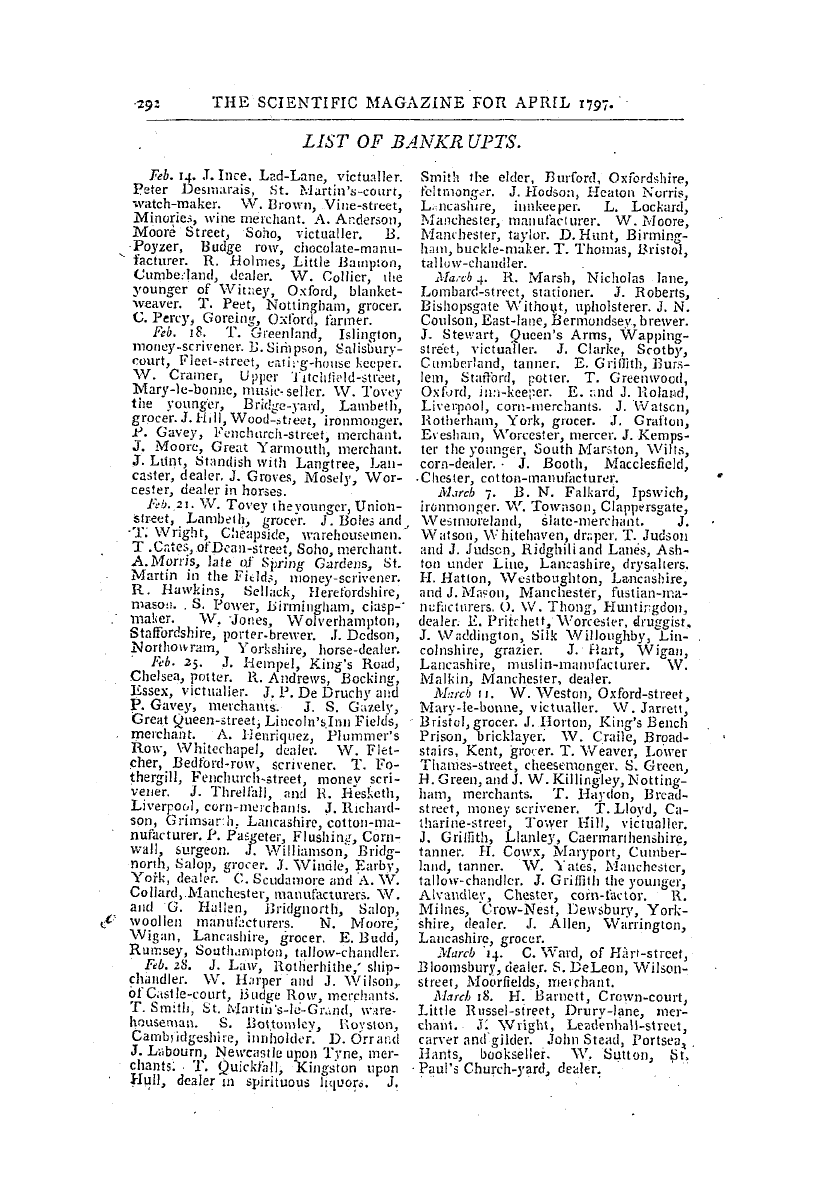-
Articles/Ads
Article DESCRIPTION OF THE ISLAND OF TRINIDAD, ← Page 3 of 4 →
Note: This text has been automatically extracted via Optical Character Recognition (OCR) software.
Description Of The Island Of Trinidad,
Natural indolence prevented them from reaping the advantages which nature presented . Many of them led a life little removed from the . savage state . The British Island of Tobago is only about twenty . rriiLss distant from the North-east end of Trinidad , ancl it can be distinguished from some parts of Grenada . Its vicinity to these two Colonies renders it a desirable acquisition to Great Britain .
The following account of the state of the island some years since ^ ' is extracted from the Philosophical and Political History of the East and West Inches , by the Abbe Rayiial : 'The island Which the Spaniards first met with on their arrival in America , is called Trinidad . Columbus landed on it in 149 8 , when he discovered the Oroonoko ; but other objects interfering
, both the island , and the coasts of the neig hbouring continent ; were at that time neglected . . ... ' It was not till 153 ; , that the court of Madrid took possession of the Island of Trinidad , which is situated facing the mouth of the Oroonoko , as it were to moderate the rapidity of that river . It is said to comprehend three hundred and eihteen square leagues . It
g hath never experienced any hurricane , and its climate is wholesome . The rains are very abundant there from the middle of May to the end of October ; and the dryness that prevails throughout the rest of the year is not attended with any inconvenience , becaiise the country , though destitute of navigable rivers , is very well watered . The earthquakes are more frequent than dangerous . In the interior part
of the island there are four groups of mountains , which , together with some others formed by nature upon the shores of the ocean , occupy a third part of the territory . The rest is in general susceptible of the richest culture .
' The form of the island is square . To the north is a coast of twenty-two leagues in extent , too much elevated , and too much divided , ever to be of any use . The eastern coast is only nineteen leagues in extent , but in all parts as convenient as one could wish it to be . The southern coast hath five-and-twenty leagues , is a little exalted , and adapted for the successful cultivation of coffee and cocoa . The land on the western side is separated from the rest of the
colony , to the south by the Soldier ' s Canal , and to the north by the Dragon ' s Mouth , and forms , by means of a recess , , a harbour of twenty leagues in breadth , and thirty in depth . It offers , in all seasons , a secure asylum to the navigators , who , during the greatest part of the year , would find it difficult to anchor any where else , except at the lace calledthe Galiote .
p . ' In this part are the Spanish settlements . They consist only of the Port of Spain , upon which there are seventy-eig ht thatched huts ; and of Saint Joseph , situated three leagues further up the country , where eighty-eight families , still more wretched than the former , are computed . - ' The cocoa was formerly cultivated near these two villages . Its
Note: This text has been automatically extracted via Optical Character Recognition (OCR) software.
Description Of The Island Of Trinidad,
Natural indolence prevented them from reaping the advantages which nature presented . Many of them led a life little removed from the . savage state . The British Island of Tobago is only about twenty . rriiLss distant from the North-east end of Trinidad , ancl it can be distinguished from some parts of Grenada . Its vicinity to these two Colonies renders it a desirable acquisition to Great Britain .
The following account of the state of the island some years since ^ ' is extracted from the Philosophical and Political History of the East and West Inches , by the Abbe Rayiial : 'The island Which the Spaniards first met with on their arrival in America , is called Trinidad . Columbus landed on it in 149 8 , when he discovered the Oroonoko ; but other objects interfering
, both the island , and the coasts of the neig hbouring continent ; were at that time neglected . . ... ' It was not till 153 ; , that the court of Madrid took possession of the Island of Trinidad , which is situated facing the mouth of the Oroonoko , as it were to moderate the rapidity of that river . It is said to comprehend three hundred and eihteen square leagues . It
g hath never experienced any hurricane , and its climate is wholesome . The rains are very abundant there from the middle of May to the end of October ; and the dryness that prevails throughout the rest of the year is not attended with any inconvenience , becaiise the country , though destitute of navigable rivers , is very well watered . The earthquakes are more frequent than dangerous . In the interior part
of the island there are four groups of mountains , which , together with some others formed by nature upon the shores of the ocean , occupy a third part of the territory . The rest is in general susceptible of the richest culture .
' The form of the island is square . To the north is a coast of twenty-two leagues in extent , too much elevated , and too much divided , ever to be of any use . The eastern coast is only nineteen leagues in extent , but in all parts as convenient as one could wish it to be . The southern coast hath five-and-twenty leagues , is a little exalted , and adapted for the successful cultivation of coffee and cocoa . The land on the western side is separated from the rest of the
colony , to the south by the Soldier ' s Canal , and to the north by the Dragon ' s Mouth , and forms , by means of a recess , , a harbour of twenty leagues in breadth , and thirty in depth . It offers , in all seasons , a secure asylum to the navigators , who , during the greatest part of the year , would find it difficult to anchor any where else , except at the lace calledthe Galiote .
p . ' In this part are the Spanish settlements . They consist only of the Port of Spain , upon which there are seventy-eig ht thatched huts ; and of Saint Joseph , situated three leagues further up the country , where eighty-eight families , still more wretched than the former , are computed . - ' The cocoa was formerly cultivated near these two villages . Its































































